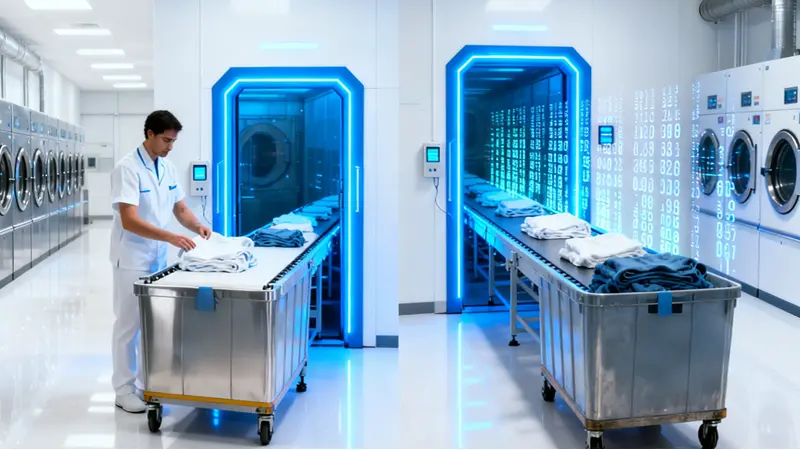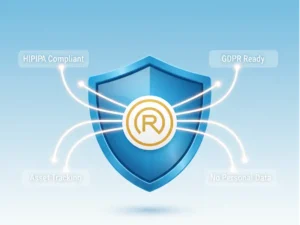
The Ultimate Guide to Choosing RFID Laundry Tags
Custom Your RFID Cards
Industrial laundry operates on thin margins. If you’re dealing with high labor costs, lost linens, and shipping mistakes, your facility likely suffers from hidden inefficiencies. RFID isn’t a costly upgrade, it’s a practical solution. By making your operation transparent and automated, RFID helps you cut costs, boost efficiency, and improve service. This guide covers the key questions decision-makers face, from selecting RFID laundry tags technology and materials to proven strategies for smooth implementation.
Smart Laundry: What RFID Really Simplifies
Before exploring the technology, consider one simple question: Why invest in RFID? Because RFID replaces every manual counting process with automated data capture, turning your labor into an efficiency engine.
- Receiving: From two workers spending 30 minutes manually checking deliveries → one-second automatic gate read with a complete, accurate report.
- Sorting: From four operators manually sorting items at the conveyor (with frequent mistakes) → light-assisted sorting that cuts labor and errors.
- Dispatching: From regular shipping errors and client complaints → 100% order verification before delivery, with the system flagging any mistakes.
Each upgrade delivers a direct boost to your bottom line.
🔗 Read more: How RFID Brings Visibility to Your Laundry Workflow
Choosing the Right Technology (UHF vs HF)
UHF (Ultra High Frequency): The Efficiency Advantage
Best for
- Industrial laundries and linen rental companies
- Operations where profit depends on processing high volumes quickly
- Facilities where manual sorting and lost time are the biggest bottlenecks
RFID Match: UHF tags can be read from several meters away and in bulk, ideal for automatic gate or tunnel systems.
Infrastructure Requirements:
- RFID tunnel/gate readers ($3,000–8,000 per set)
- Industrial handheld readers ($1,000–2,000 each)
- Middleware for backend integration
ROI: Massive time and labor reduction. Automation scales your entire workflow.
HF (High Frequency): The Precision & Value Game
Best for:
- Luxury dry cleaners, boutique laundry services, 5-star hotels
- Businesses where accuracy and trust are critical
- Operations handling high-value garments where loss or mix-ups are the top risks
RFID Match: HF enables short-range, one-to-one reading (up to 10 cm), ensuring zero misreads.
Infrastructure Needs: Simple desktop or USB readers ($100–300); no expensive gates required.
ROI: Eliminates costly claim losses and protects brand reputation.
🔗 Decision Guide: UHF vs HF – Which RFID Technology Fits Your Laundry Business?
Choosing the Right Material: PPS vs. Textile vs. Silicone
Once you’ve chosen your RFID technology, the next priority is material durability. The tag’s material determines how well it survives heat, pressure, and chemicals in your laundry process.
PPS: The Armored Tank
- Ultra-rugged, heat- and pressure-resistant, chemically stable
- Best for heavy-duty industrial laundries with high-speed extractors (up to 60 bar) and ironing at 200°C+
- Typically sewn into garments or placed in pockets
Textile Tags: The Flexible Companion
- Soft, flexible, can be heat-sealed
- Ideal for hotel linens, uniforms, or any use where comfort and flexibility matter
- Usually heat-sealed or sewn onto the fabric
Silicone Tags: The Waterproof All-Rounder
- Fully waterproof, flexible, sealed against moisture and chemicals
- Perfect for laundry bags or items exposed to humid environments
- Commonly inserted into pouches or pockets
🔗 Material Comparison: PPS vs Textile vs Silicone — Which Laundry Tag Fits Your Environment?
Deployment Basics – A Simple 4-Step Process
Most successful RFID projects start small and scale up.
- Define Your Core Objective: Pinpoint your biggest pain point: sorting errors, labor costs, or shipping mistakes. Focus on solving a single challenge first.
- Select the Right Components: Use your earlier decisions on tag type and frequency to match the right product to your workflow. Options include UHF PPS, UHF Textile, and HF Silicone tags.
- Choose the Mounting Method: Common attachment methods are heat-sealing, sewing, or placing tags in pouches. For industrial laundry, heat-sealing offers speed and security.
- Run a Pilot Test: Start on a small scale: one production line or a single client’s linen set. Confirm read rates and workflow compatibility before expanding to full deployment.
Addressing the Final Doubts (FAQ Highlights)
Here are two of the most common questions:
Q1: Can RFID read accurately through wet or stacked linens?
Water can interfere with UHF signals, but with the right tags and optimized reader setup, you can achieve 99.9% read accuracy, which meets industrial standards.
Q2: Does tagging employee uniforms compromise privacy?
No. RFID tracks only the tag ID for inventory purposes within your facility; it does not collect personal data or enable off-site tracking.
🔗 Read more: RFID Laundry Tag FAQ — Everything Buyers Want to Know
Conclusion: Your First Step Toward RFID Transformation
You now have the foundation to start your RFID journey — why it matters, what technology to select, which materials work, and how to deploy them. RFID isn’t just a product purchase; it’s a strategic, system-level upgrade for your entire operation. Contact us for a free consultation, and find the tag solution that fits your business.


